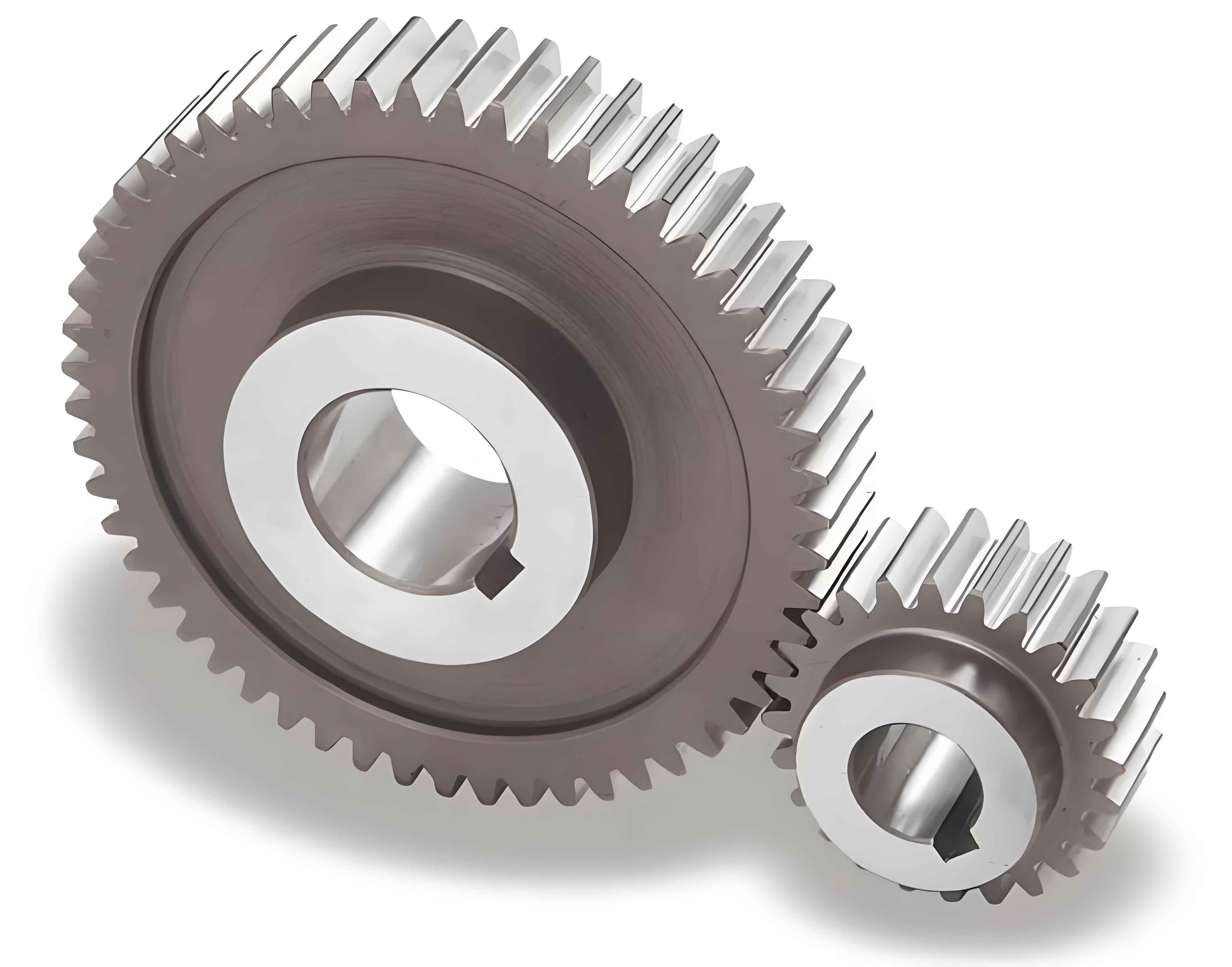
Introduction
Spur gear is fundamental components in numerous mechanical systems, playing a critical role in power transmission. The manufacturing process of spur gear significantly impacts their performance, durability, and cost. This comparative study explores various spur gear manufacturing processes, evaluating their advantages, disadvantages, and applications. The processes covered include casting, forging, machining, powder metallurgy, and additive manufacturing.
Manufacturing Processes
1. Casting
Casting involves pouring molten metal into a mold to form spur gear shape. This process is suitable for producing large and complex gear.
Advantages
- Suitable for complex shapes and large sizes
- Cost-effective for high-volume production
- Can produce spur gear with internal cavities
Disadvantages
- Lower dimensional accuracy compared to other methods
- Surface finish may require additional machining
- Potential for internal defects such as porosity
Applications
- Large gears in heavy machinery
- Gears with complex geometries
2. Forging
Forging involves deforming metal under high pressure to form spur gear shape. This process enhances the mechanical properties of spur gear.
Advantages
- Excellent mechanical properties due to grain refinement
- High strength and toughness
- Good dimensional accuracy
Disadvantages
- High initial tooling cost
- Limited to simpler shapes
- Requires additional machining for final dimensions
Applications
- High-strength gears in automotive and aerospace industries
- Gears requiring high impact resistance
3. Machining
Machining involves removing material from a metal blank using tools like hobbing, milling, or grinding to create spur gear teeth.
Advantages
- High dimensional accuracy
- Excellent surface finish
- Flexibility in spur gear design
Disadvantages
- Material wastage due to cutting
- High production cost for large quantities
- Time-consuming for complex shapes
Applications
- Precision gear in robotics and instrumentation
- Prototyping and small batch production
4. Powder Metallurgy
Powder metallurgy involves compacting metal powders into a die and sintering them to form solid gear. This process allows for the creation of spur gear with unique properties.
Advantages
- Minimal material wastage
- Can produce complex shapes with internal features
- Good dimensional control
Disadvantages
- Limited to small and medium-sized gear
- Lower mechanical properties compared to forged spur gear
- High cost of metal powders
Applications
- Spur gear in small appliances and electronic devices
- High-volume production of small gear
5. Additive Manufacturing
Additive manufacturing, or 3D printing, builds spur gear layer by layer from digital models. This process is highly flexible and can create complex geometries.
Advantages
- Ability to produce complex and customized shapes
- Minimal material wastage
- Short lead times for prototypes and small batches
Disadvantages
- Limited mechanical properties compared to traditional methods
- High cost of materials and equipment
- Surface finish may require post-processing
Applications
- Prototyping and small batch production
- Customized gear for specific applications
Table 1: Comparative Analysis of Spur Gear Manufacturing Processes
| Process | Advantages | Disadvantages | Applications |
|---|---|---|---|
| Casting | Suitable for complex shapes, cost-effective | Lower dimensional accuracy, potential defects | Large gears, complex geometries |
| Forging | High strength, good dimensional accuracy | High initial tooling cost, simpler shapes | High-strength gears, automotive, aerospace |
| Machining | High accuracy, excellent surface finish | Material wastage, high production cost | Precision gears, robotics, prototyping |
| Powder Metallurgy | Minimal wastage, complex shapes | Limited size, lower mechanical properties | Small appliances, high-volume small gears |
| Additive Manufacturing | Complex shapes, short lead times | Limited mechanical properties, high material cost | Prototyping, customized gears, specific applications |
Case Studies
Case Study 1: Automotive Gear Manufacturing
In the automotive industry, Spur gear must withstand high loads and stresses. Forging is often preferred for its ability to produce high-strength gears. However, machining is used for precision gears in transmission systems where high accuracy is critical.
Table 2: Gear Manufacturing in Automotive Industry
| Process | Application | Key Requirements | Outcome |
|---|---|---|---|
| Forging | High-strength gears | Strength, toughness | Enhanced durability and performance |
| Machining | Transmission gears | Precision, surface finish | Improved gear accuracy and efficiency |
Case Study 2: Prototyping with Additive Manufacturing
Additive manufacturing is increasingly used for rapid prototyping of spur gear. This allows for quick iterations and design testing before committing to mass production methods like casting or forging.
Table 3: Prototyping with Additive Manufacturing
| Process | Application | Key Requirements | Outcome |
|---|---|---|---|
| Additive Manufacturing | Gear prototyping | Speed, flexibility | Fast development and testing, reduced lead time |
Future Trends in Spur Gear Manufacturing
Integration of Advanced Materials
The use of advanced materials, such as composites and nanomaterials, is expected to enhance the performance and longevity of spur gear.
Benefits
- Improved wear resistance
- Higher strength-to-weight ratio
- Enhanced performance in extreme conditions
Automation and Smart Manufacturing
The integration of automation and smart manufacturing technologies, including robotics and AI, will streamline spur gear manufacturing process, improving efficiency and consistency.
Benefits
- Reduced production time
- Enhanced precision and quality control
- Real-time monitoring and adjustment
Table 4: Future Trends in Spur Gear Manufacturing
| Trend | Description | Potential Benefits |
|---|---|---|
| Advanced Materials | Use of composites, nanomaterials | Improved wear resistance, strength-to-weight ratio |
| Automation and Smart Manufacturing | Integration of robotics, AI, and IoT | Reduced production time, enhanced precision |
Conclusion
The choice of spur gear manufacturing process depends on various factors, including the required gear properties, production volume, and cost considerations. Casting, forging, machining, powder metallurgy, and additive manufacturing each offer unique advantages and are suitable for different applications. Future trends, such as the use of advanced materials and smart manufacturing technologies, promise to further enhance the efficiency and performance of spur gear production. By understanding the strengths and limitations of each manufacturing process, engineers can make informed decisions to optimize gear design and production.
